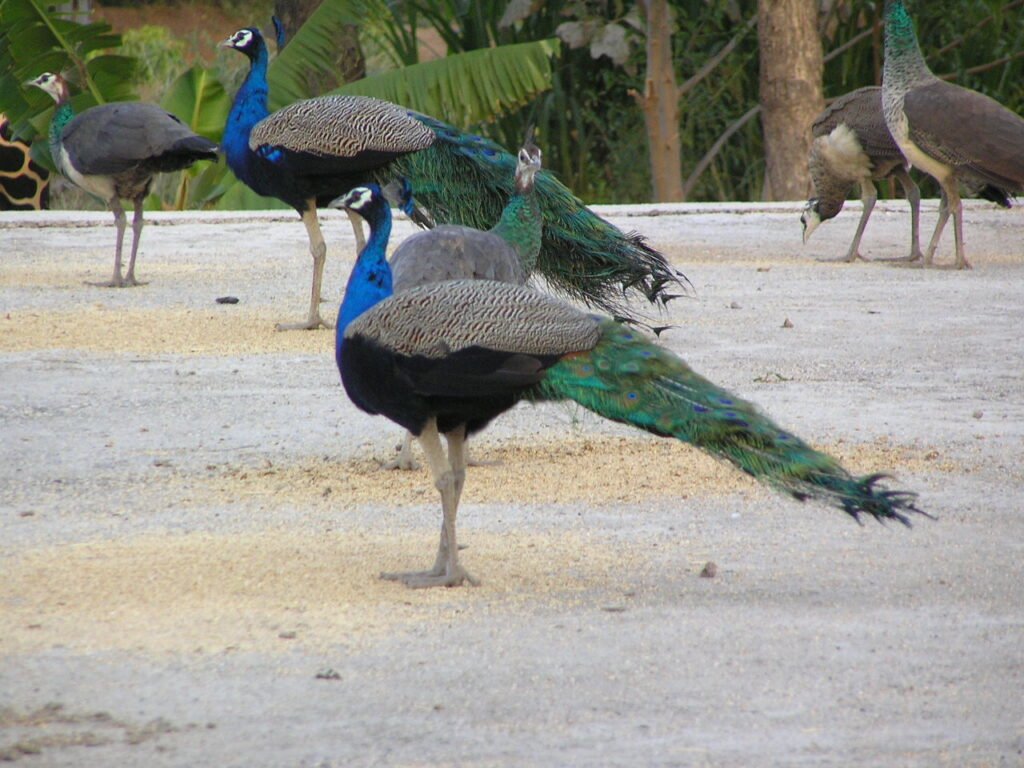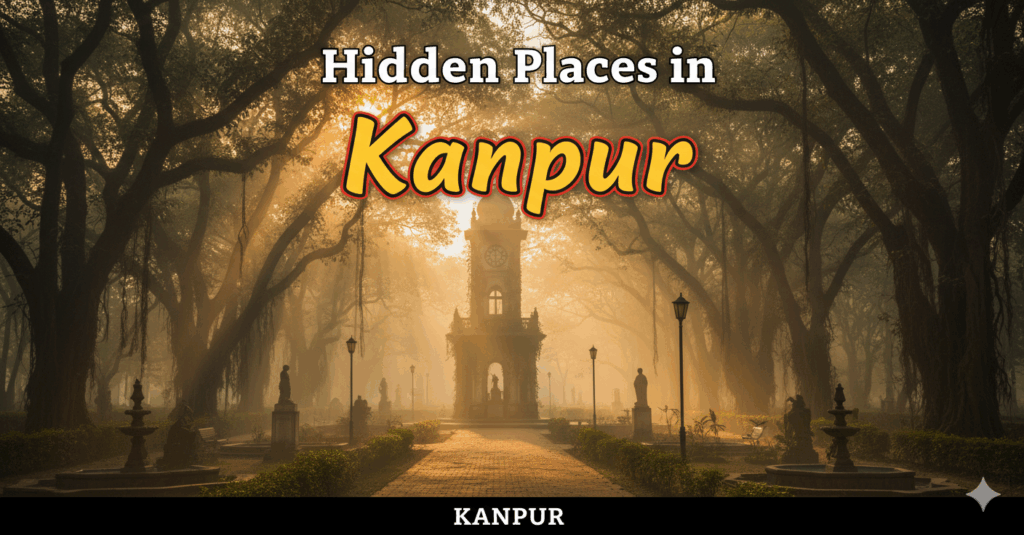Nestled about 55 kilometers from Pune in Maharashtra, Morachi Chincholi has earned its reputation as the “Peacock Village” of India. This charming rural destination offers a refreshing escape from urban chaos and provides visitors with a unique opportunity to witness hundreds of peacocks in their natural habitat. Understanding the morachi chincholi best time to visit is essential for maximizing your experience at this enchanting destination.
The name “Morachi Chincholi” reflects its identity – “Mor” means peacock in Marathi, while “Chincholi” refers to tamarind trees. Dating back over 400 years, this village’s sustainable agricultural practices created the perfect habitat for peacocks, gaining recognition in the 1970s for its unusually high peacock population. Today, Morachi Chincholi hosts over 2,000 peacocks amid 30,000+ tamarind trees, representing a perfect example of community-based conservation where tourism supports both wildlife protection and traditional ways of life.
Table of Contents
Morachi Chincholi Best Time to Visit: Complete Seasonal Guide
The ideal time to visit Morachi Chincholi largely depends on what you hope to experience during your trip. The village transforms dramatically with each season, offering visitors entirely different experiences throughout the year. Understanding these seasonal variations helps visitors align their trips with their preferences for weather, peacock activity, and overall experience quality.
Seasonal Comparison Overview
| Season | Months | Temperature | Peacock Activity | Crowd Level | Best For | Rating |
|---|---|---|---|---|---|---|
| Monsoon | Jul-Sep | 22-28°C | Highest (mating season) | Moderate | Peacock dances, photography | ⭐⭐⭐⭐⭐ |
| Winter | Oct-Feb | 15-25°C | Moderate | High | Comfortable exploration, families | ⭐⭐⭐⭐☆ |
| Spring | Feb-Mar | 20-30°C | Moderate | Moderate | Blooming landscapes, cultural activities | ⭐⭐⭐⭐☆ |
| Summer | Mar-Jun | 30-38°C | Low (except near water) | Low | Swimming, budget travel | ⭐⭐⭐☆☆ |
Monsoon Season (July to September): The Ultimate Peacock Paradise

The monsoon season stands out as the absolute best time to visit Morachi Chincholi for wildlife enthusiasts and photographers. This period offers the most spectacular peacock displays and lush green landscapes that create perfect conditions for wildlife observation.
During these rainy months, the village comes alive with vibrant green landscapes that create the perfect backdrop for peacock watching. The peak peacock mating season features their mesmerizing courtship dances, with the highest chances of witnessing peacocks with their magnificent tail feathers fully displayed. Comfortable temperatures ranging between 22-28°C make it ideal for outdoor exploration, while fewer tourists compared to winter weekends ensure a more intimate wildlife experience.
The dramatic monsoon skies and rain-washed scenery enhance the natural beauty of the village, making it particularly photogenic. Local guides note that peacocks are most active during and after light rain showers, when they often emerge to dance and display their magnificent plumage against the lush green backdrop. The sound of peacock calls echoing across the village during monsoon evenings creates an almost magical atmosphere that visitors remember long after their trip.
Photography enthusiasts find this season particularly rewarding, as the contrast between the brilliant blue-green peacock feathers and the vibrant monsoon landscape creates stunning visual compositions. The soft, diffused light during cloudy days provides ideal conditions for wildlife photography without harsh shadows.
Winter Season (October to February): The Family-Friendly Choice
Winter brings pleasant weather conditions that make it the second-best time to visit Morachi Chincholi, particularly for families and those planning day trips from Pune or Mumbai. The comfortable temperatures and clear skies create ideal conditions for extended outdoor activities and comprehensive facility exploration.
Mild, comfortable temperatures between 15-25°C provide perfect weather for extended outdoor activities, excellent visibility for peacock spotting and wildlife photography, and ideal conditions for village exploration and cultural immersion. Higher peacock sightings during early mornings (6-8 AM) and late afternoons (4-6 PM) coincide with perfect weather for enjoying swimming pool facilities and outdoor dining experiences.
Winter mornings in Morachi Chincholi are particularly magical, with mist rolling across the tamarind groves and peacocks calling from their roosting spots. The clear, crisp air provides excellent visibility for photography and wildlife observation. Many families choose winter visits because children can comfortably spend long hours outdoors without weather-related discomfort.
However, winter weekends can get crowded, especially during December-January festivals, so consider a weekday visit if you prefer a more serene experience. Many visitors from Mumbai take advantage of group tour packages during this season to enjoy the pleasant weather and vibrant village life. Comprehensive regional exploration can be enhanced through Rajasthan tour packages from Mumbai for diverse cultural experiences. The combination of comfortable weather and active peacock behavior makes winter an excellent compromise for visitors who want guaranteed wildlife sightings without monsoon travel concerns.
Spring Season (February to March): The Balanced Experience
Spring offers a perfect middle ground with moderate temperatures and increased peacock activity as they prepare for the upcoming mating season. This transitional period combines comfortable weather with the anticipation of peak wildlife activity.
Pleasant temperatures ranging from 20-30°C create ideal conditions for all activities, while blooming flora creates colorful landscapes that complement peacock viewing. Moderate peacock activity includes occasional territorial displays as males begin establishing dominance for the upcoming mating season. This period is perfect for cultural festivals and traditional celebrations, with ideal weather for photography and nature walks.
Spring visitors often witness the beginning of peacock courtship behaviors, providing a preview of the spectacular displays that will peak during monsoon season. The weather is warm enough for swimming while remaining comfortable for extended outdoor exploration.
Summer Season (March to June): For Budget-Conscious Travelers
Summer months bring higher temperatures to Morachi Chincholi, making it less ideal for most travelers. However, this season offers unique advantages for budget-conscious visitors and those who prefer less crowded experiences.
Significantly fewer tourists ensure personalized attention from guides and staff, while discounted accommodation rates at local resorts and farm stays make it attractive for budget travelers. Higher chances of seeing peacocks gathering near water sources provide unique observation opportunities, and swimming pool access becomes particularly refreshing and popular during the heat.
Early morning explorations (6-8 AM) and evening activities (after 4 PM) remain enjoyable, avoiding the intense midday heat. Summer visitors often develop deeper connections with local guides and villagers due to the more intimate, less crowded environment.
Morachi Chincholi Entry Fee and Operational Details

Understanding the entry costs and operational hours helps in planning a smooth visit to this peacock sanctuary. The pricing structure is designed to be accessible while supporting local conservation efforts and community development.
Entry Fee Structure
Individual Entry Fees:
- Adults: ₹150 per person
- Children (5-12 years): ₹100 per person
- Children below 5 years: Free entry
- Still Camera: ₹50 additional charge
- Video Camera: ₹100 additional charge
- Vehicle Parking: ₹50 for cars, ₹20 for two-wheelers
Package Deals and Value Options: Many resorts and farms in the area offer comprehensive package deals that include entry fees along with meals and activities. These packages typically range from ₹800-1500 per person depending on inclusions such as traditional Maharashtrian meals, guided village tours, swimming pool access, cultural activity participation, and photography sessions. Package deals often provide better value than individual service bookings while ensuring comprehensive facility access.
Visiting Hours and Optimal Times
Daily Operating Schedule:
- Morning Session: 8:00 AM to 12:30 PM
- Afternoon Break: 12:30 PM to 2:00 PM (closed for peacock feeding and rest)
- Evening Session: 2:00 PM to 6:00 PM
- Open: All days of the week throughout the year
Prime Peacock Viewing Times: The best peacock viewing occurs during early mornings (8:00-10:00 AM) and late afternoons (4:00-6:00 PM) when birds are most active. During peak monsoon season, peacocks are generally more active throughout the day, and the sanctuary occasionally extends evening hours until sunset for special peacock viewing opportunities. Feeding times at 7:00 AM and 5:00 PM often result in larger peacock gatherings, providing excellent observation opportunities.
Morachi Chincholi Food Experience: Authentic Rural Cuisine

The culinary experience at Morachi Chincholi offers visitors an authentic taste of rural Maharashtra, with farm-to-table dishes that showcase traditional cooking methods and locally sourced ingredients. The dining experience emphasizes the connection between agriculture and cuisine while providing genuine cultural immersion.
Traditional Maharashtrian Cuisine Highlights
Most farms and resorts serve authentic Maharashtrian cuisine prepared using traditional methods that have been passed down through generations. The emphasis on farm-fresh ingredients and wood-fired cooking creates an authentic culinary experience that complements the rural atmosphere.
Signature Dishes:
- Bharli Vangi: Stuffed eggplant curry prepared with locally grown spices and vegetables
- Zunka Bhakar: Traditional chickpea flour dish served with millet bread baked in clay ovens
- Matki Usal: Sprouted moth beans curry rich in proteins and local flavors
- Pithla: Traditional gram flour curry with authentic rural preparation methods
- Puran Poli: Sweet flatbread filled with jaggery and lentils, perfect for special occasions
Wood-Fired Cooking Experience: Many establishments prepare food in traditional clay ovens (chulha) or on wood fires, enhancing authentic flavors while providing visitors with live cooking demonstrations and cultural immersion opportunities. The smoky flavors imparted by wood-fired cooking create distinctive tastes that cannot be replicated in modern kitchens.
Farm-to-Table Excellence and Interactive Experiences
The farm-to-table concept goes beyond modern trends, representing a traditional way of life where ingredients travel from soil to plate within hours. This approach ensures maximum freshness while supporting local agriculture.
Seasonal Specialties: Monsoon delicacies include ambil (traditional sour porridge) and fresh corn preparations, while winter features gavhle (sweet pancakes) and traditional sweets made with fresh jaggery. Year-round favorites include homemade pickles, fresh yogurt, buttermilk, and seasonal fruit preparations.
Interactive Culinary Experiences: Live cooking demonstrations allow visitors to learn traditional techniques from local village women, while organic farm tours reveal the source of meal ingredients. Spice garden walks help visitors understand the herbs and spices that create authentic Maharashtrian flavors, and hands-on cooking classes provide memorable cultural learning experiences.

Morachi Chincholi: Perfect One-Day Picnic Spot Near Pune
With its proximity to Pune (approximately 55 km) and manageable distance from Mumbai (around 170 km), Morachi Chincholi has become increasingly popular as a one-day picnic destination for urban dwellers seeking authentic rural experiences and wildlife encounters.
Comprehensive Day Trip Planning
A well-structured day at Morachi Chincholi balances wildlife observation with cultural experiences and relaxation activities to maximize visitor satisfaction and learning opportunities.
Optimal Morning Itinerary (8:00 AM – 12:30 PM): Early arrival at 8:00 AM ensures optimal peacock sightings and photography opportunities when birds are most active. A guided village tour at 8:30 AM helps visitors understand the unique ecosystem and conservation efforts that make the village special. Traditional bullock cart rides through scenic countryside and tamarind groves provide authentic rural transportation experiences, while visits to the peacock interpretation center offer educational insights into conservation initiatives.
Nature photography sessions and peaceful observation time allow visitors to connect with the natural environment, and cultural interactions with local villagers and artisan demonstrations provide authentic cultural immersion experiences.
Afternoon Activities (2:00 PM – 6:00 PM): Traditional Maharashtrian lunch featuring authentic farm-to-table cuisine introduces visitors to regional flavors and cooking techniques. Swimming pool recreation and relaxation time provide cooling relief and family entertainment, while participation in rural activities like pottery making, traditional farming, or handicraft workshops offers hands-on cultural learning.
Evening peacock safari provides final wildlife viewing opportunities during the birds’ second active period, souvenir shopping for local handicrafts supports community artisans, and final facility exploration ensures visitors experience all available attractions before departure at 6:00 PM.
Transportation and Accessibility
Multiple transportation options ensure convenient access to Morachi Chincholi from major cities, allowing visitors to choose the most suitable travel method based on their preferences and group size.
Self-Drive Options: Well-maintained roads make Morachi Chincholi easily accessible for private vehicles, with the scenic drive through rural Maharashtra countryside adding to the overall experience. Clear signage and adequate parking facilities with security arrangements are available at the destination.
Public Transportation: Train connections from Pune to Shirur station followed by local buses or shared autos provide budget-friendly access, while state transport buses run from Pune to nearby villages with connecting local transport services.
Organized Tours: Several tour operators from Pune and Mumbai offer comprehensive day packages including expert naturalist guides, guaranteed peacock viewing opportunities, cultural interactions with local villagers, traditional meal experiences, and hassle-free transportation coordination. Extended regional exploration can be enhanced through Udaipur tour packages from Mumbai for comprehensive cultural tourism.
Accommodation and Extended Experiences
The accommodation landscape around Morachi Chincholi offers diverse options that cater to different budgets and preferences while maintaining authentic rural character.
Accommodation Options:
- Morachi Chincholi Resort: ₹2,500-4,000 per night with swimming pool and cultural programs
- Peacock Bay Resort: ₹3,000-5,000 per night featuring lake views and nature activities
- Village Homestays: ₹1,500-2,500 per night with authentic family experiences
- Eco-Lodges: ₹2,000-3,500 per night emphasizing sustainable tourism
Features: Traditional architecture using local materials, modern amenities balanced with rural charm, evening folk performances and cultural programs, and accommodations designed to maximize peacock viewing opportunities from rooms.
Nearby Attractions for Extended Exploration
The region surrounding Morachi Chincholi offers additional wildlife and cultural attractions that complement the peacock viewing experience, allowing visitors to create comprehensive itineraries covering multiple aspects of Maharashtra’s natural and cultural heritage.
Bhigwan Bird Sanctuary (40 km): November to February offers the best time for migratory birds including flamingos and pelicans, with boat rides and photography workshops available.
Shirdi (120 km): Famous pilgrimage site with religious significance and cultural experiences, offering wide accommodation options for extended stays.
Nighoj Potholes (60 km): Unique geological formations best visited post-monsoon for water-filled potholes and scenic beauty.
Bhandardara (80 km): Hill station with lakes, waterfalls, and trekking opportunities, ideal during monsoon and post-monsoon seasons. Comprehensive regional exploration can be enhanced through India tour packages from Mumbai covering multiple cultural and natural destinations across India.
Conclusion
Morachi Chincholi offers extraordinary opportunities to witness India’s national bird in its natural habitat while experiencing authentic rural Maharashtra culture. For optimal experiences, plan your visit during monsoon months (July-September) when peacocks are most active and landscapes are lush green. However, each season provides unique advantages, from winter’s comfortable weather to summer’s budget-friendly options.
Understanding entry fees, seasonal patterns, and conservation guidelines ensures well-planned visits that maximize peacock sightings while supporting crucial conservation efforts that protect this remarkable ecosystem for future generations. You can visit us at VDP Travels, Neighbourhood Complex, F- 5, near SBI Bank, Sector 4, Nerul, Navi Mumbai, Mumbai, Maharashtra 400706. For comprehensive Morachi Chincholi tours with expert guides and complete peacock village packages, call +91 99675 18405, or visit VDP Travels.
Morachi Chincholi Best Time to Visit – FAQs
Is Morachi Chincholi suitable for a day trip from Pune?
Yes, at just 55 km from Pune, it’s perfect for day trips. Most visitors spend 5-6 hours exploring peacock watching, village tours, and traditional meals with good road connectivity.
What is the best time of day to see peacocks at Morachi Chincholi?
Early mornings (8:00-10:00 AM) and late afternoons (4:00-6:00 PM) offer the best peacock sightings. During monsoon, they’re active throughout the day, especially after rain showers.
How many peacocks can visitors expect to see during their visit?
With over 2,000 peacocks in the village, visitors typically spot 50-100 birds during a day visit. Numbers are higher during peak monsoon mating season.
Are there stay options available at Morachi Chincholi?
Yes, several farms and resorts offer accommodations from ₹2,500-5,000 per night, including Morachi Chincholi Resort, Peacock Bay, and family-run farm stays with various amenities.
What type of food is served at Morachi Chincholi?
Authentic Maharashtrian cuisine featuring bharli vangi, zunka bhakar, matki usal, and pithla prepared using traditional wood-fired cooking methods with fresh local ingredients.
Can we bring our own food to Morachi Chincholi?
Most farms discourage outside food as they offer traditional meals as part of the cultural experience. You may bring water and small snacks for dietary requirements.
Is photography allowed in the peacock sanctuary?
Yes, photography is permitted with regular cameras for ₹50 additional fee, video recording for ₹100. Professional filming requires special permission from management.
What other activities are available besides peacock watching?
Activities include bullock cart rides, village tours, swimming pools, cultural performances, cooking demonstrations, pottery workshops, farming experiences, and nature walks.
Is the destination suitable for elderly visitors and children?
Yes, most areas are accessible though some uneven terrain walking is involved. Many farms provide golf carts or bullock carts for mobility assistance.
Do I need to book in advance to visit Morachi Chincholi?
Advance booking is recommended, especially for weekends, holidays, and monsoon season. Peak mating season may require 2-3 weeks advance reservation.
How do the villagers ensure the peacocks remain in the area year-round?
Villagers maintain ideal habitat through 30,000+ preserved tamarind trees, natural water sources, and preferred food availability. Peacocks choose to stay due to favorable conditions.
What should visitors avoid doing to protect the peacock population?
Avoid loud noises, feeding peacocks, approaching too closely, disturbing nesting areas, and bringing pets. Follow designated paths and wildlife viewing guidelines.





